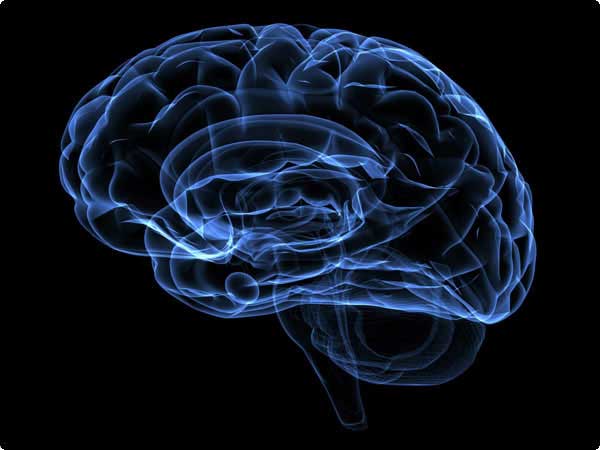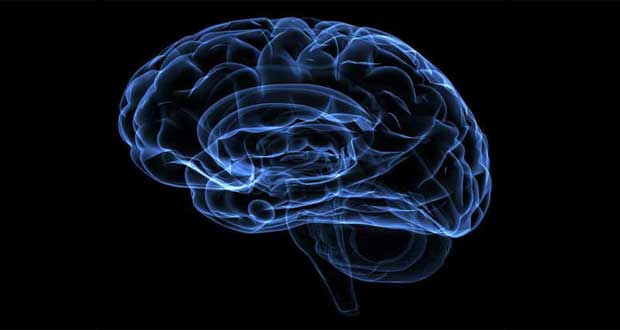تحقیقات صورت گرفته توسط محققان آلمانی نشان میدهد که یک جفت پروتئین، گردش اطلاعات به مرکز حافظه مغز را کنترل میکنند محققان علوم اعصاب در مرکز DZNE و مرکز تحقیقات سرطان آلمان (DKFZ) نمونههای بافت موش را برای شناسایی عملکرد دو پروتئین خاص CKAMP44 و TARP Gamma-8 مورد ارزیابی قرار دادند.
این جفت مولکول که رونوشت مشابهی در بدن انسان دارند، ارتباط بین سلولهای عصبی را تحت تأثیر قرار داده و بر انتقال سیگنال های عصبی به هیپوکامپ اثر میگذارند.
عملکرد مغز به ارتباط فعال بین سلولهای عصبی – نورونها – بستگی دارد؛ به همین منظور نورونها به یکدیگر بافته شدند تا شبکه متراکمی ایجاد شود؛ اما نورونها ارتباط مستقیمی با یکدیگر برقرار نکردند و به جای آن، نورونها بوسیله سیناپس از یکدیگر جدا شدند.
انتقالدهنده عصبی (neurotransmitter) وظیفه انتقال سیگنالهای عصبی از یک سلول به سلول دیگر را برعهده دارد؛ مجتمعهای مولکولی خاص در پوسته خارجی سلول به نام گیرنده از طریق اتصال به انتقالدهندههای عصبی، سیگنال را دریافت میکنند.
دو مولکول خاص CKAMP44 و TARP Gamma-8 همراه با گیرندههای AMPA در سلولهای گرانول حضور دارند؛ این نورونها سیگنال را از مناطق خارج از هیپوکامپ دریافت میکنند.
به گفته دکتر «جاکوب فون انگلهارت»، نتایج این مطالعه نشان میدهد که این سلولها تأثیر چشمگیری بر عملکرد گیرندههای گلوتامات دارند و توانایی یک سلول عصبی در ردیابی سیگنال تنها به گیرندههای واقعی بستگی ندارد.

براین اساس، جفت مولکول CKAMP44 و TARP Gamma-8 نیز بسیار مهم بوده و عملکرد آنها جدا از گیرندهها نیستند
سلولهای گرانول از طریق دندریتها با سایر سلولها در ارتباط هستند و اتصالات واقعی – سیناپسها – بر روی برآمدگیهای خار مانند دیده میشوند؛ این خارها (spines) در تصویر به رنگ سبز نشان داده شدهاند.
A protein couple controls flow of information into the brain’s memory center
A protein couple controls flow of information into the brain’s memory center
Neuroscientists in Bonn and Heidelberg have succeeded in providing new insights into how the brain works. Researchers at the German Center for Neurodegenerative Diseases (DZNE) and the German Cancer Research Center (DKFZ) analyzed tissue samples from mice to identify how two specific proteins, ‘CKAMP44’ and ‘TARP Gamma-8’, act upon the brain’s memory center. These molecules, which have similar counterparts in humans, affect the connections between nerve cells and influence the transmission of nerve signals into the hippocampus, an area of the brain that plays a significant role in learning processes and the creation of memories. The results of the study have been published in the journal Neuron.
enlarged view Granule cells connect with other cells via long projections (dendrites). The actual junctions (synapses) are located on thorn-like protuberances called “spines”. Spines are shown in green in the computer reconstruction. | © DZNE / Michaela Müller
Brain function depends on the active communication between nerve cells, known as neurons. For this purpose, neurons are woven together into a dense network where they constantly relay signals to one another. However, neurons do not form direct contacts with each other. Instead they are separated by an extremely narrow gap, known as the synapse. This gap is bridged by ‘neurotransmitters’, which carry nerve signals from one cell to the next.
Docking stations
Specific molecular complexes in the cell’s outer shell, so-called ‘receptors’, receive the signal by binding the neurotransmitters. This triggers an electrical impulse in the receptor-bearing cell and thus the nerve signal has moved on one neuron further.
In the current study, a team led by Dr Jakob von Engelhardt focused on the ‘AMPA’ receptors. These bind the neurotransmitter ‘glutamate’ and are particularly common in the brain. “We looked at AMPA receptors in an area of the brain, which constitutes the main entrance to the hippocampus,” explains von Engelhardt, who works for the DZNE and DKFZ. “The hippocampus is responsible for learning and memory formation. Among other things it processes and combines sensory perception. We therefore asked ourselves how the flow of information into the hippocampus is controlled.”
A pair of helpers
Dr von Engelhardt’s research team specifically focused on two protein molecules: ‘CKAMP44’ and ‘TARP Gamma-8’. These proteins are present, along with AMPA receptors, in the ‘granule’ cells, which are neurons that receive signals from areas outside of the hippocampus. It was already known that these proteins form protein complexes with AMPA receptors. “We have now found out that they exert a significant influence on the functioning of glutamate receptors. Each in its own way, as chemically they are completely different,” says the neuroscientist. “We identified that the ability of a nerve cell to receive signals doesn’t depend solely on the actual receptors; CKAMP44 and TARP Gamma-8 are just as important. Their function cannot be separated from that of the receptors.”
This was the result of an analysis in which the researchers compared brain tissue from mice with a natural genotype with brain tissue from genetically modified mice. Neurons in the genetically modified animals were not able to produce either CKAMP44 or TARP Gamma-8 or both.
Long-term effect
The researchers discovered, among other things, that both proteins promote the transportation of glutamate receptors to the cell surface. “This means they influence how receptive the nerve cell is to incoming signals,” says von Engelhardt.
However, the number of receptors and thus the signal reception can be altered by neuronal activity. The von Engelhardt group found that in this regard the auxiliary molecules have different effects: TARP Gamma-8 is essential to ensure that more AMPA receptors are integrated into the synapse following a plasticity induction protocol, whereas CKAMP44 plays no role in this context. “Synapses alter their communication depending on their activity. This ability is called plasticity. Some of the changes involved are only temporary, others may last longer,” explains von Engelhardt. “TARP Gamma-8 influences long-term plasticity. It makes the cell able to strengthen synaptic communication for a prolonged time-period. The larger the number of receptors on the receiving side of the synapse, the better the neuronal connection.”
The number of receptors doesn’t change suddenly, but remains largely stable for a certain amount of time. “This condition may last for hours, days or even longer. This long-term effect is essential for the creation of memories. We can only remember things if the connections between neurons undergo a long-lasting change,” says the scientist.
Fast sequence of signals
However, CKAMP44 and TARP Gamma-8 also act over shorter periods of time. The research team discovered that the molecules affect how quickly the AMPA receptors return to a receptive state. “If glutamate has docked on to a receptor, it takes a while until the receptor can react to the next neurotransmitter. CKAMP44 lengthens this period. In contrast, TARP Gamma-8 helps the receptor to recover more quickly,” says von Engelhardt.
Hence, CKAMP44 temporarily weakens the synaptic connection, while TARP Gamma-8 strengthens it. Through the interplay of these proteins the synapse is able to tune its sensitivity to a specific level. This condition can last from milliseconds to a few seconds before the strength of the connection is again adapted. Specialists refer to this as “short-term plasticity”.
“These molecules ultimately influence how well the nerve cell is able to react to a rapid succession of signals,” the scientist summarises the findings. “Such a rapid firing enables neuronal networks to synchronize their activity, which is a common process in the brain.”
Sensitive balance
Much to the researchers’ surprise, it turned out that the two proteins influence not only the synapse but also the shape of the nerve cells. In the absence of these auxiliary molecules, the neurons have fewer dendrites to establish contact with other nerve cells. “The organism can use CKAMP44 and TARP Gamma-8 molecules to regulate neuronal connections in a number of ways,” von Engelhardt says. “This ability depends on the balance between the partners, as to some extent they have a contrary effect. The way in which the neurons of the hippocampus react to signals from other regions of the brain is therefore highly dependent on the presence and the expression ratio of these molecules.”
Since the two molecules act directly on the structure and function of synapses of granule cells, Jakob von Engelhardt considers it probable that they also have an influence on learning and memory.
Original publication
Co-expressed auxiliary subunits exhibit distinct modulatory profiles on AMPA receptor function, Konstantin Khodosevich, Eric Jacobi, Paul Farrow, Anton Schulmann, Alexandru Rusu, Ling Zhang, Rolf Sprengel, Hannah Monyer, Jakob von Engelhardt, Neuron, 2014, DOI: 10.1016/j.neuron.2014.07.004
The German Cancer Research Center (Deutsches Krebsforschungszentrum, DKFZ) with its more than 3,000 employees is the largest biomedical research institute in Germany. At DKFZ, more than 1,000 scientists investigate how cancer develops, identify cancer risk factors and endeavor to find new strategies to prevent people from getting cancer. They develop novel approaches to make tumor diagnosis more precise and treatment of cancer patients more successful. The staff of the Cancer Information Service (KID) offers information about the widespread disease of cancer for patients, their families, and the general public. Jointly with Heidelberg University Hospital, DKFZ has established the National Center for Tumor Diseases (NCT) Heidelberg, where promising approaches from cancer research are translated into the clinic. In the German Consortium for Translational Cancer Research (DKTK), one of six German Centers for Health Research, DKFZ maintains translational centers at seven university partnering sites. Combining excellent university hospitals with high-profile research at a Helmholtz Center is an important contribution to improving the chances of cancer patients. DKFZ is a member of the Helmholtz Association of National Research Centers, with ninety percent of its funding coming from the German Federal Ministry of Education and Research and the remaining ten percent from the State of Baden-Württember
 گجت نیوز آخرین اخبار تکنولوژی، علم و خودرو
گجت نیوز آخرین اخبار تکنولوژی، علم و خودرو 







